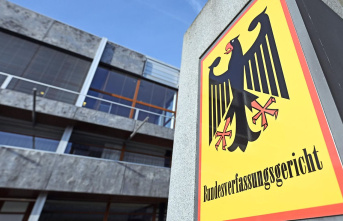The earnings of pensioners in Germany differ significantly from federal state to federal state. On average, old-age pensions are highest in Saarland, where pensioners after 35 insurance years earn an average of 1593 euros gross per month. This is shown by the Pension Atlas 2022 published in Berlin by the German Pension Insurance Association. The different pension levels reflect differences between the regions, for example on the job market.
North Rhine-Westphalia takes second place in the ranking according to the amount of pension with 1564 euros per month. This is followed by Hamburg with 1531 euros, Hesse (1524 euros) and Baden-Württemberg (1521 euros). East Berlin, which was specially counted, takes sixth place in this ranking (1515 euros). Behind: Rhineland-Palatinate (1492 euros), Schleswig-Holstein (1483 euros), Lower Saxony (1471 euros), Bremen (1466 euros) and Bavaria (1458 euros).
Thuringia brings up the rear
West Berlin (EUR 1,426), Brandenburg (EUR 1,402), Saxony (EUR 1,364), Mecklenburg-Western Pomerania (EUR 1,363) and Saxony-Anhalt (EUR 1,353) are in the bottom places when it comes to average pension levels. Thuringia brings up the rear. There, the monthly gross salary of 1346 euros is on average 247 euros lower than in Saarland.
The differences are due to regionally different opportunities for working and earning money. Regarding the comparatively high pensions in the Saar, Rhine and Ruhr regions, the pension insurance system states: "Previously, many men worked here in well-paid jobs in the mining industry and today they receive comparatively high pensions."
Women get less pension
On average, women in all regions receive lower pensions than men - but the differences are by far not the same everywhere. "Overall, it is noticeable that the difference between the average pensions for men and women in eastern Germany is smaller than in the west," says the pension atlas. "The most important reason: women in the east were less part-time employees."
As a result, women in the former GDR were more likely to earn a level comparable to that of their male colleagues. When it comes to pensions, women in North Rhine-Westphalia currently earn an average of 510 euros less per month than men. In Saxony, this difference is only 264 euros.
Duration of pension stagnation
A trend that has been unbroken for years with the general increase in life expectancy has stopped for the time being - that of ever longer pension payments. The average duration of pension receipts for men last year was 18.5 years - just like two years earlier in the previous edition of the pension atlas. Women continue to receive a pension for an average of 22 years. In 2016 it was 21.6 years for women and 17.6 years for men.
"In addition to the elimination of types of pensions that could be drawn before the standard retirement age, the raising of the age limits on the start of the pension has an effect here," explains the pension insurance company. By way of comparison: in 1971 men in West Germany received an average pension of 10.5 years. At that time, women received their pension for an average of 13 years.
Retired about two years later
The average age at which pensions were claimed for the first time has risen. In 2000, the average age for women was 62.3 and for men 62.2 years. Last year, people were significantly older on average when they retired - women 64.2 and men 64.1 years. According to pension insurance, a major reason is that, unlike today, early retirement pensions could sometimes be claimed at the age of 60 in the past, both for women and because of unemployment. In addition, the limit for the standard old-age pension will gradually increase to 67 years by 2029.












